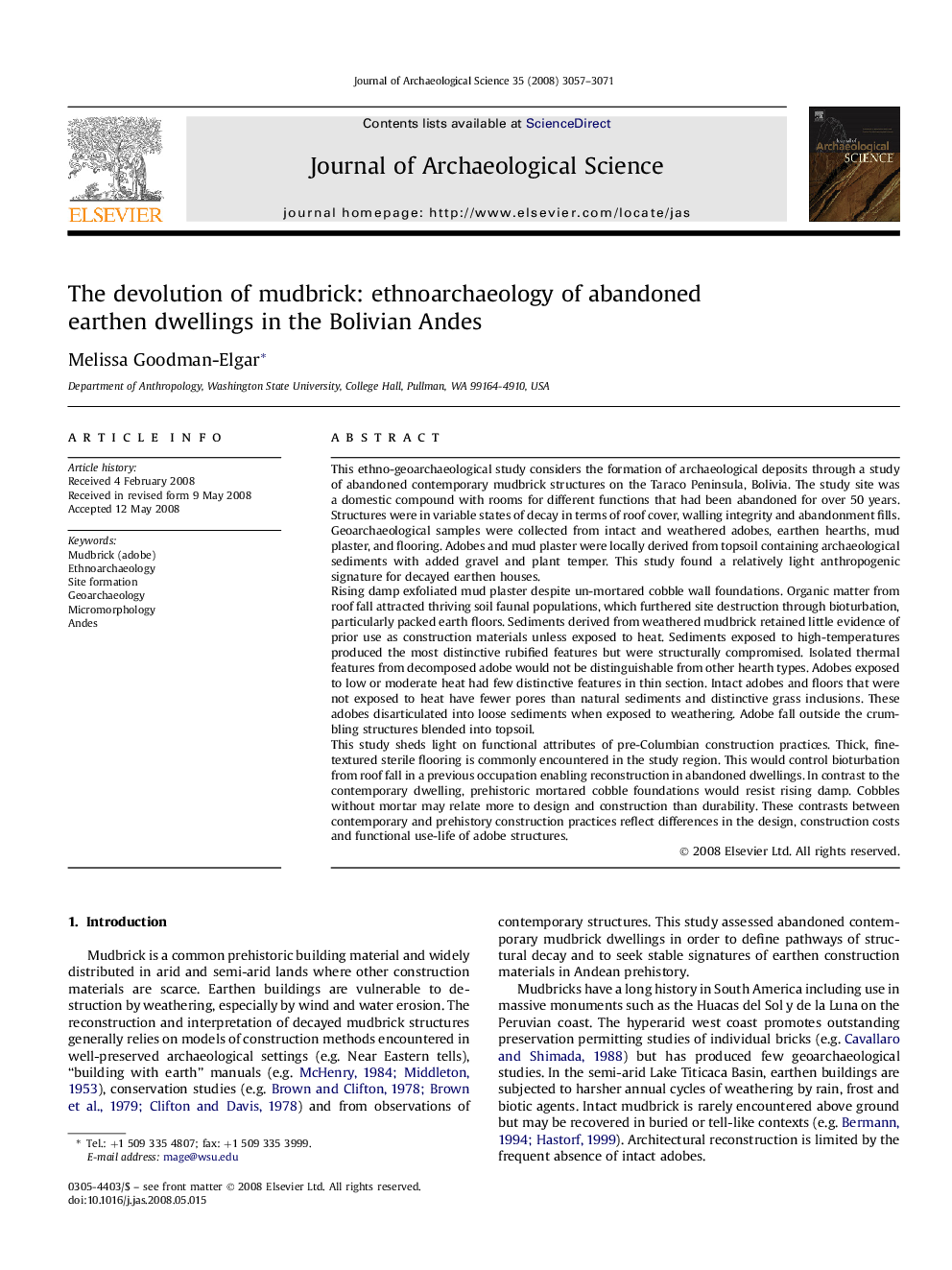| کد مقاله | کد نشریه | سال انتشار | مقاله انگلیسی | نسخه تمام متن |
|---|---|---|---|---|
| 1037203 | 943915 | 2008 | 15 صفحه PDF | دانلود رایگان |

This ethno-geoarchaeological study considers the formation of archaeological deposits through a study of abandoned contemporary mudbrick structures on the Taraco Peninsula, Bolivia. The study site was a domestic compound with rooms for different functions that had been abandoned for over 50 years. Structures were in variable states of decay in terms of roof cover, walling integrity and abandonment fills. Geoarchaeological samples were collected from intact and weathered adobes, earthen hearths, mud plaster, and flooring. Adobes and mud plaster were locally derived from topsoil containing archaeological sediments with added gravel and plant temper. This study found a relatively light anthropogenic signature for decayed earthen houses.Rising damp exfoliated mud plaster despite un-mortared cobble wall foundations. Organic matter from roof fall attracted thriving soil faunal populations, which furthered site destruction through bioturbation, particularly packed earth floors. Sediments derived from weathered mudbrick retained little evidence of prior use as construction materials unless exposed to heat. Sediments exposed to high-temperatures produced the most distinctive rubified features but were structurally compromised. Isolated thermal features from decomposed adobe would not be distinguishable from other hearth types. Adobes exposed to low or moderate heat had few distinctive features in thin section. Intact adobes and floors that were not exposed to heat have fewer pores than natural sediments and distinctive grass inclusions. These adobes disarticulated into loose sediments when exposed to weathering. Adobe fall outside the crumbling structures blended into topsoil.This study sheds light on functional attributes of pre-Columbian construction practices. Thick, fine-textured sterile flooring is commonly encountered in the study region. This would control bioturbation from roof fall in a previous occupation enabling reconstruction in abandoned dwellings. In contrast to the contemporary dwelling, prehistoric mortared cobble foundations would resist rising damp. Cobbles without mortar may relate more to design and construction than durability. These contrasts between contemporary and prehistory construction practices reflect differences in the design, construction costs and functional use-life of adobe structures.
Journal: Journal of Archaeological Science - Volume 35, Issue 12, December 2008, Pages 3057–3071